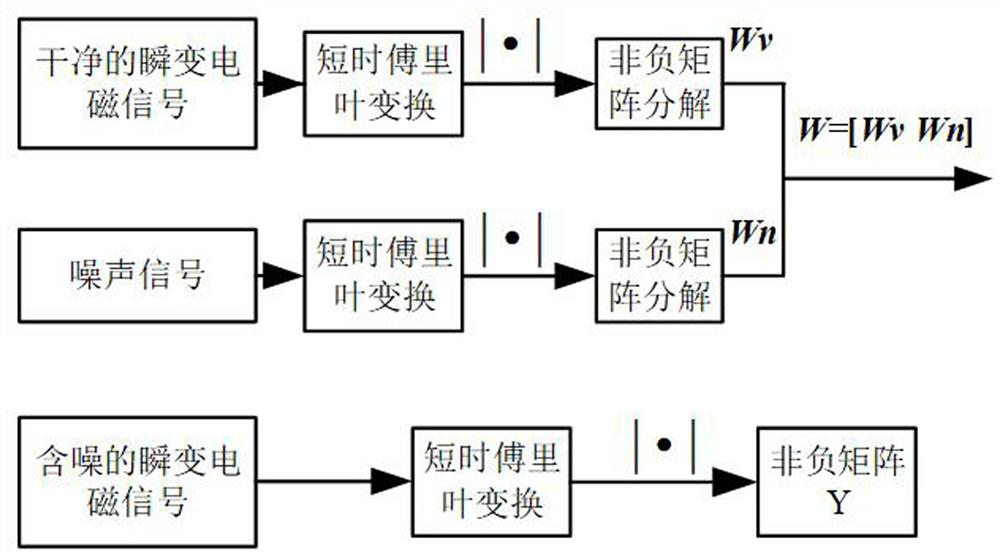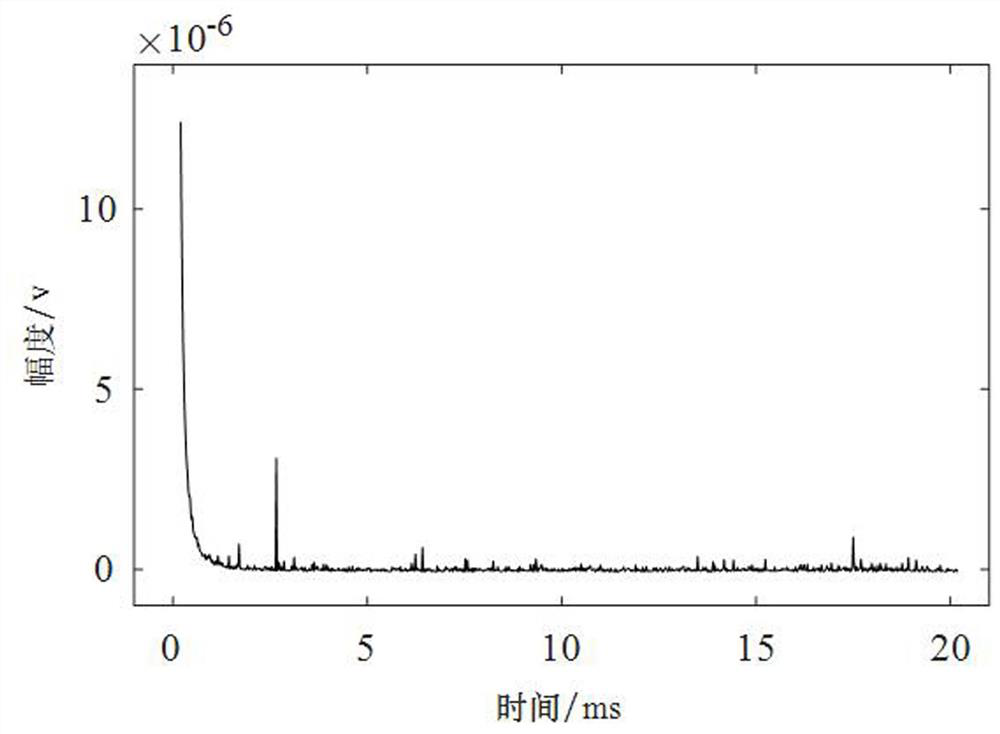Supervised transient electromagnetic signal noise reduction method based on non-negative matrix factorization
A non-negative matrix decomposition, transient electromagnetic technology, applied in the re-radiation of sound waves, electric/magnetic exploration, radio wave measurement systems, etc., can solve the lack of adaptability, affect transient electromagnetic signal processing work, noise reduction Unsatisfactory results, etc.
- Summary
- Abstract
- Description
- Claims
- Application Information
AI Technical Summary
Problems solved by technology
Method used
Image
Examples
Embodiment
[0043] refer to figure 1 , a supervised transient electromagnetic signal denoising method of non-negative matrix factorization, comprising the following steps:
[0044] 1) Collect the transient electromagnetic signal y measured by the transient electromagnetic instrument using the center loop device. The time domain expression of this noisy transient electromagnetic signal y is: y(m)=v(m)+n(m ), m=1,2,...M, where M represents the size of the collected data, v(m) is a pure transient electromagnetic signal, and n(m) is an additive noise;
[0045] 2) Discard the late data of the noisy transient electromagnetic signal y and keep the early and mid-term data for later use;
[0046] 3) Construct a signal feature extractor: perform short-time Fourier transform on the noisy transient electromagnetic signal y, the pure transient electromagnetic signal v(m) and the noise signal n(m) respectively, and obtain their respective amplitude spectra and Phase spectrum, take their magnitude s...
PUM
 Login to View More
Login to View More Abstract
Description
Claims
Application Information
 Login to View More
Login to View More - R&D Engineer
- R&D Manager
- IP Professional
- Industry Leading Data Capabilities
- Powerful AI technology
- Patent DNA Extraction
Browse by: Latest US Patents, China's latest patents, Technical Efficacy Thesaurus, Application Domain, Technology Topic, Popular Technical Reports.
© 2024 PatSnap. All rights reserved.Legal|Privacy policy|Modern Slavery Act Transparency Statement|Sitemap|About US| Contact US: help@patsnap.com










